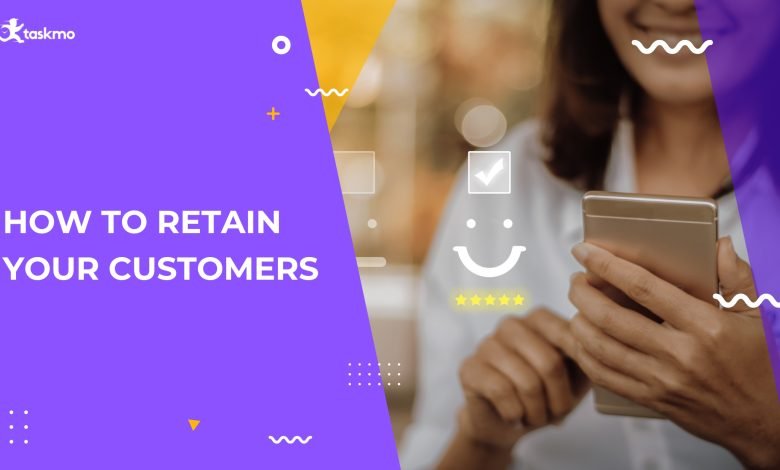How to retain customers || Taskmo

New customer conversion is undoubtedly quite thrilling. However, many companies make the error of ignoring the important clients they already have and devote the majority of their marketing resources to client acquisition rather than client retention. According to a recent study, keeping a current customer is over 7 times less expensive than acquiring a new one.
In addition to being cost-effective, customer retention is a terrific branding exercise to satisfy your clients and turn them into brand ambassadors. If they like you, they’ll recommend you to others that too for free!
When do you focus on customer retention
This totally depends on your store’s current status. This tends to greatly affect whether you should concentrate more on customer acquisition or retention. A recent store that just opened today is different from the one that has been in the market for quite some time.
For a basic idea let’s try to understand the timeline.
1. Just starting: When you’ve just started your store there is one thing you should be focused on: getting customers. At this point, your acquisition efforts should completely trump retention. Focus on strategies and tactics that will help you grow your customer base.
2. Gaining traction: You now have customers and you are getting sporadic sales. At this stage, you can begin to introduce retention elements to encourage each customer to buy more. My recommendation would be to start with retention email campaigns that focus on encouraging a past customer to purchase from you again.
3. Consistent: You aren’t quite an e-commerce juggernaut, but sales are growing. This is the point where you should begin to think about mixing in more retention with your acquisition efforts. You can look at starting a referral and/or a loyalty program as well as getting more serious with marketing automation.
While there are no specific formulas to retain customers but one needs to be mindful of certain pointers to retain them.
Important steps to retain your customers
1. Create a strong onboarding experience.
When a customer makes their first purchase, your company has the opportunity to make a lasting impression, so make sure your onboarding process runs smoothly.
A good onboarding process should include not only excellent customer service but also the effectiveness of the onboarding programme itself. To excite and impress new clients, your company should have workflows with well-timed email triggers, follow-up messaging, self-service knowledge base access, and celebratory messaging.
2. Give each customer a customised experience.
No two consumers are the same, thus they might be asking for specialised services from your company. One-size-fits-all solutions should not be offered to clients that require goods and services that take different scales, time constraints, or other preferences into account.
In fact, 78% of marketers say personalisation has a “strong” or “very strong” impact, and 99% of marketers agree that it helps advance client relationships.
Keep your offering pertinent and tailored to each individual consumer to ensure that the solution provided is the best appropriate for the issues they are experiencing. Because of the attentiveness your company offers, they’ll be more likely to do business with you in the future.
3. Build trust with your customers
When it comes to fostering trust between your business and your clients, two things are true:
a) Don’t presume they do so simply because they do business with you.
b) Building trust takes time.
81% of consumers agree that trust plays a significant role in their choice to make a purchase. No business can deploy a universal strategy to build trust overnight. After all, “strong belief in the reliability, truth, competence, or strength of someone or something” is the definition of trust. Your business should continually provide clients with value since reliability is a crucial component in developing trust.
Customers’ perceptions of your brand will change over time if you consistently uphold your brand promise and do what you claim you’ll do.
4. Utilise social media to its fullest.
Social media platforms are quite helpful for keeping in touch with customers after the initial transaction. By showcasing the human side of your company on social media, you can engage customers and foster trust. Keep an eye on the beliefs, passions, and goals of your customers. Identify and honour your most devoted customers. This can be done by offering excellent customer service and working to change any unfavourable impressions that other followers may have. Social media platforms have become the go-to place for consumers to communicate concerns, make inquiries, and report problems with products. Utilise it to demonstrate that your company listens to and values its clients.
Conclusion:
Retaining customers is not rocket science. The finest resource your store has is its current consumer base. Customers are aware of your brand, are familiar with your goods, and value your services.
Instead of always looking for new clients, concentrating your time and efforts on making this group’s experience better can be a potent approach to boost sales for your business. From now on, give attention to customer retention!




